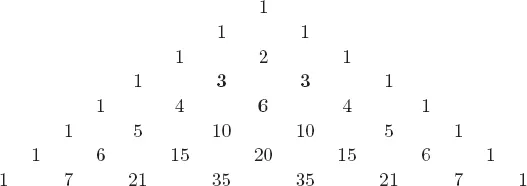
Combinatorial Identities For Stirling Numbers: The Unpublished Notes Of H W Gould
The Unpublished Notes of H W Gould
- 276 pages
- English
- ePUB (mobile friendly)
- Available on iOS & Android
Combinatorial Identities For Stirling Numbers: The Unpublished Notes Of H W Gould
The Unpublished Notes of H W Gould
About This Book
This book is a unique work which provides an in-depth exploration into the mathematical expertise, philosophy, and knowledge of H W Gould. It is written in a style that is accessible to the reader with basic mathematical knowledge, and yet contains material that will be of interest to the specialist in enumerative combinatorics. This book begins with exposition on the combinatorial and algebraic techniques that Professor Gould uses for proving binomial identities. These techniques are then applied to develop formulas which relate Stirling numbers of the second kind to Stirling numbers of the first kind. Professor Gould's techniques also provide connections between both types of Stirling numbers and Bernoulli numbers. Professor Gould believes his research success comes from his intuition on how to discover combinatorial identities.
This book will appeal to a wide audience and may be used either as lecture notes for a beginning graduate level combinatorics class, or as a research supplement for the specialist in enumerative combinatorics.
This book is a unique work which provides an in-depth exploration into the mathematical expertise, philosophy, and knowledge of H W Gould. It is written in a style that is accessible to the reader with basic mathematical knowledge, and yet contains material that will be of interest to the specialist in enumerative combinatorics. This book begins with exposition on the combinatorial and algebraic techniques that Professor Gould uses for proving binomial identities. These techniques are then applied to develop formulas which relate Stirling numbers of the second kind to Stirling numbers of the first kind. Professor Gould's techniques also provide connections between both types of Stirling numbers and Bernoulli numbers. Professor Gould believes his research success comes from his intuition on how to discover combinatorial identities.
This book will appeal to a wide audience and may be used either as lecture notes for a beginning graduate level combinatorics class, or as a research supplement for the specialist in enumerative combinatorics.
Readership: Undergraduates, graduates and researchers interested in combinatorial and algebraic techniques.
Key Features:
- Professor Gould is an acknowledged expert in the field of Stirling number identities
- For the first time in print, this book collects Professor's Gould's vast knowledge on this subject in one accessible location
- This book contains Professor Gould's unique approaches to discovering and proving binomial identities
- This book contains many fully-worked detailed proofs of the identities found in H W Gould's "Combinatorial Identities: A Standardized Set of Tables Listing 500 Binomial Coefficient Summations"
Frequently asked questions
Information
Chapter 1
Basic Properties of Series
















Table of contents
- Cover Page
- Title Page
- Copyright
- Dedication
- Foreword
- Preface
- Acknowledgments
- Contents
- 1. Basic Properties of Series
- 2. The Binomial Theorem
- 3. Iterative Series
- 4. Two of Professor Gould’s Favorite Algebraic Techniques
- 5. Vandermonde Convolution
- 6. The nth Difference Operator and Euler’s Finite Difference Theorem
- 7. Melzak’s Formula
- 8. Generalized Derivative Formulas
- 9. Stirling Numbers of the Second Kind S(n, k)
- 10. Eulerian Numbers
- 11. Worpitzky Numbers
- 12. Stirling Numbers of the First Kind s(n, k)
- 13. Explicit Formulas for s(n, n − k)
- 14. Number Theoretic Definitions of Stirling Numbers
- 15. Bernoulli Numbers
- Appendix A Newton-Gregory Expansions
- Appendix B Generalized Bernoulli and Euler Polynomials
- Bibliography
- Index